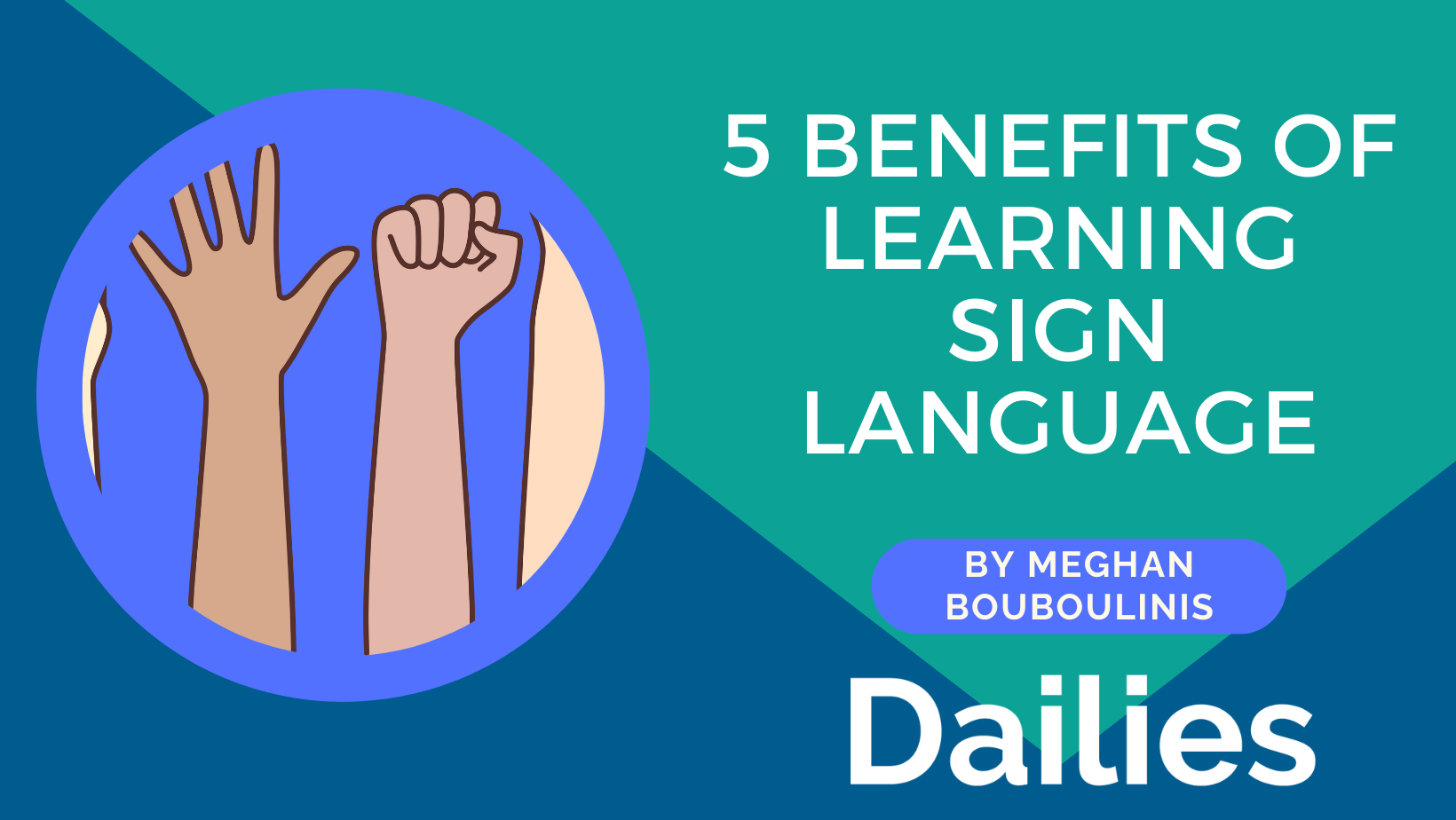Why Should I Learn Sign Language?
Learning Sign Language at any age is a valuable life skill; whether you are learning sign language to communicate with a family member, a friend, a student, a patient, or as another part of your job, the ability to communicate without words has countless benefits for those of any age. As with learning any new language, the earlier it is introduced, the more beneficial. DailiesPods is proud to offer American Sign Language (ASL) as one of our classes and we are excited to share 5 of the most powerful benefits to learning sign language.
1. Long-Term Cognitive Benefits
One of the biggest cognitive benefits of learning sign language, especially from a young age, is enhanced creativity. In fact, a study by UC Davis and California State University found that teaching babies ASL led to stronger reasoning skills and higher IQ scores, by an average of 122 points! While we know that spoken language and signed language are significantly different, research has also shown that the underlying process to put together phrases is actually quite similar. The process of translating what has been said or signed and then responding with sign language keeps your cognitive skills constantly in use.
2. Increased Reaction Times (And Peripheral Vision)
In addition to cognitive skills, learning sign language also greatly improves reaction times and peripheral vision. These skills go hand-in-hand during activities such as basketball, tennis, cycling, and even driving. When speaking to others using sign language, your sense of vision is heightened as you watch what the person is signing which increases the necessity of your other senses, like hearing. A study from The UK also found that deaf adults had much better reaction times than both hearing adults and sign language interpreters. All of these support the idea that when we cannot use one of our senses, the others are enhanced.
3. Improved Spatial Reasoning
To build upon reaction times and peripheral vision, improved spatial reasoning is another powerful benefit of learning sign language. Spatial reasoning is how we perceive that visual information in our environment. Those who are using or learning sign language have an easier time observing and processing spatial interactions than those who are not. With a heightened sense of vision, reaction times, and also creativity, the benefits of learning sign language just keep coming!
4. The Ability to Interpret Body Language
Sign language includes both hand gestures and facial expressions, making learning sign language a great way to enhance your ability to interpret body language. Communication does not have to be strictly verbal, and the ability to recognize non-language actions is a valuable skill to have. Reading people’s facial expressions sets the pace for how the conversation might go, which then kick starts reaction times and reasoning, especially for someone who might not understand sign language.
5. A Stronger Infant-Parent Bond
Perhaps our favorite benefit of learning sign language is the increased bond between infants and parents. It can be frustrating for young children to communicate their wants, needs, and feelings especially when they do not yet have the words to do so. Introducing simple signs to your little one helps ease this frustration on both ends and also increases their self-esteem because they were able to share and communicate what they needed to! This increased self-esteem and eye-contact between parent and child leads to more confidence as they child grows up, as well.
Learning Sign Language Is Literally Life Changing!
Learning any new language can seem impossible at first, but the benefits of learning sign language will quite literally improve your life! Set reasonable expectations and realistic goals and trust that the benefits of sign language will not only enrich your life, but your family’s as well.






